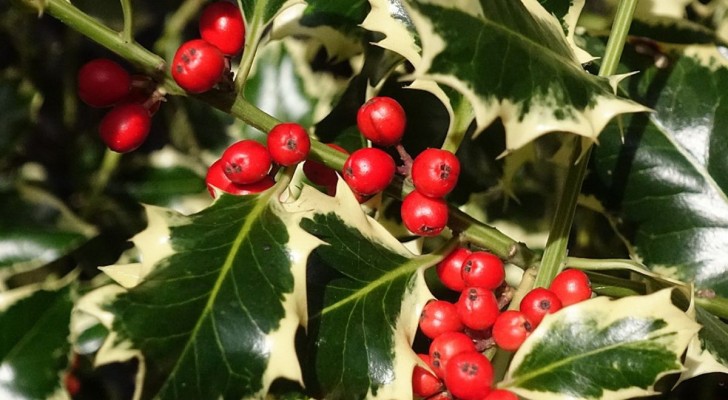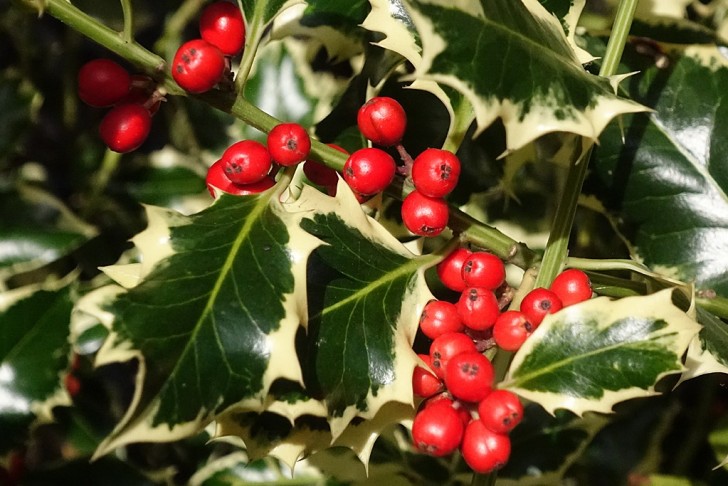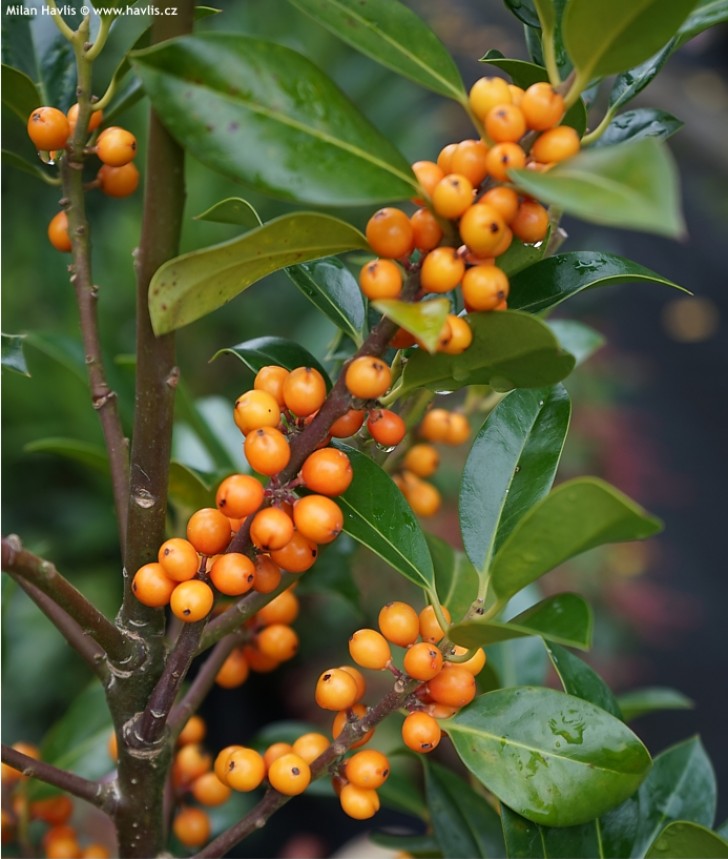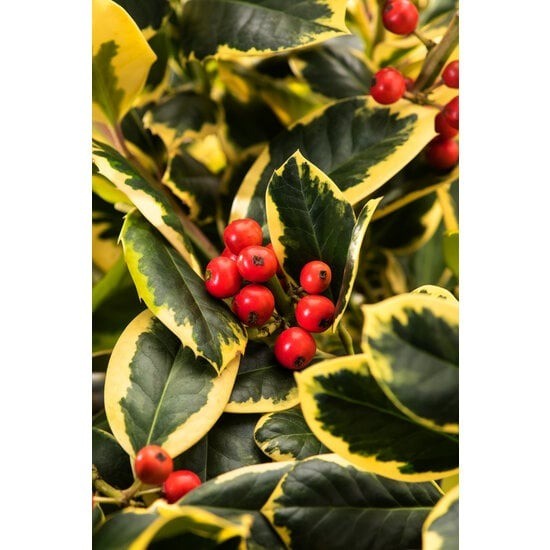Holly: the 7 most beautiful and stunning varieties of the most famous of Christmas plants

Robust and an extremely decorative plant, holly (or more properly, the Ilex), is certainly the king of Christmas decorations. With its red berries and thorny, green leaves, holly is found everywhere around Christmastime. And anyone who has this plant at home knows that it gives of its best in winter, when the leaves and berries are bursting with life and color.
In reality, holly is beautiful all year round, largely thanks to its evergreen foliage and its ability to resist both the winter cold and the summer heat. Furthermore, there are different varieties: some without thorny leaves; some with yellow berries; and others with copper-colored berries. Let's find out more about holly below:
Caring for holly

Anne Burgess/Geograph.org (CC 2.0)
One of the characteristics of holly that should never be forgotten is that it is a dioecious plant. This means that each specimen will have either male or female flowers, but never both. And the main consequence of this for those who want to cultivate holly at home, is that they will need to have two plants: a female plant that produces the berries and a male one to pollinate the flowers.
That said, holly is not particularly demanding when it comes to cultivation. It tolerates shaded areas of the garden, although it prefers a bit of sun. As for soil, holly grows best in well-draining, slightly acidic soil which is rich with organic matter. It must be watered regularly only in its first year, ensuring its roots bed down. Thereafter, it becomes autonomous. Growth is slow, but this plant is unlikely to suffer from diseases.
The most common types of holly: European and American

In the photo, you can see the most common type of holly found in Europe, the Ilex Aquifolium. Spiked leaves, red berries, and growning to a maximum height of between 5 to 8 metres. It resists diseases very well, and is also suitable for cultivation in the city, given its ability to tolerate pollution in urban areas.

In America, however, the native species is Ilex opaca, which has less spikey leaves and has a slightly more delicate green color than its European relative. I Opaca can grow up to 12-18 meters in height.

Before exploring some other Ilex species, we would like to highlight a variety much beloved for its orange/amber berries. Its name is Ilex aquifolium 'AMBER', and it has perfectly smooth leaves (ie. no spikes).
Ilex x meserveae “Blue Maid”

Let's now talk about the "ilex meservae" variety. These plants are hybrids of other holly species (rugosa hybridized with aquifolium or cornuta), and have the ability of being able to resist very cold temperatures, even as low as -25°C. Furthermore, compared to the other varieties of holly, they are more compact in size, and therefore more suited for cultivation in large pots.
The variety show here, "Blue Maid", owes its name to the color of the leaves, which are bluish green. It produces delicate, beautiful flowers in spring, with a pinkish-white hue and red berries in winter.
Ilex x meserveae “Little Rascal”

This plant is male, so it doesn't produce berries but it has a wonderful, red-toned foliage. Here too, its spring flowers are white with a pink hue. Producing a lot of pollen, this plant is perfect for the pollination of female specimens in the surrounding area!
Ilex altaclerensis “Golden King”

This splendid species of holly with variegated leaves edged in golden yellow is truly a jewel in any garden. The leaf edges are only slightly thorny, and in winter, its red berries are truly stunning. Only growing up to around 3 metres, it is also suitable for small gardens.
And these are just some of the many varieties of holly that exist! Which one would you like to have in your garden?